Last Updated
Europe is once again on everyone’s radar now that travel restrictions have dropped fully and normality has been reinstated, but while a majority of newcomers will be flocking into the continent’s Mediterranean coast this year, other lesser-known parts continue to be largely ignored.

That is the case with this not-so-popular vacation spot – at least from an average American’s standpoint – that unlike most European summer destinations, does not straddle the ancient Med but surely does not suffer from a shortage of beautiful beaches or gorgeous cobbled towns.
This season, it’s time you got introduced to Basque Country, an increasingly trendy summer getaway and one of Europe’s most culturally-charged regions:
Why Have I Never Heard Of A Basque Country?
Despite its name, the Basque Country is not a sovereign state. Though it has its own language, customs, and defining folklore, it is not a unified national polity in the contemporary era.
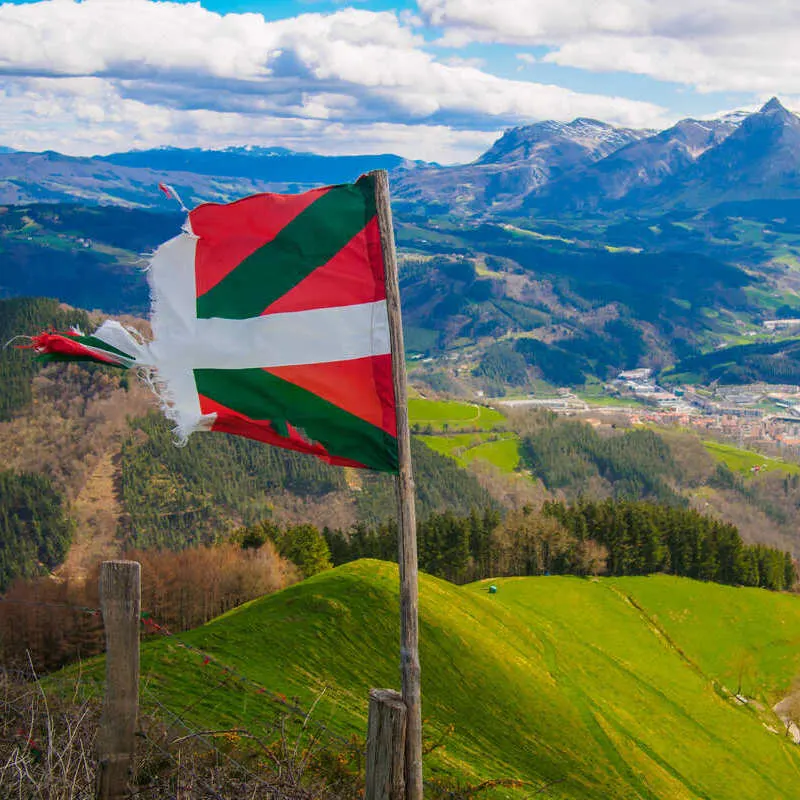
Instead, it comprises parts of Northeastern Spain and Western France, where both areas meet to form a contiguous, cross-border Basque ‘country’.
Although they share a common heritage and (as mentioned before) a language, Basque peoples are either Spanish or French nationals, seeing that the territory is split between Spain and France.
Historically, the Basque Country is most notorious for its uniqueness.
A Unique Cultural Heritage
Top 5 Travel Insurance Plans For 2023 Starting At $10 Per Week
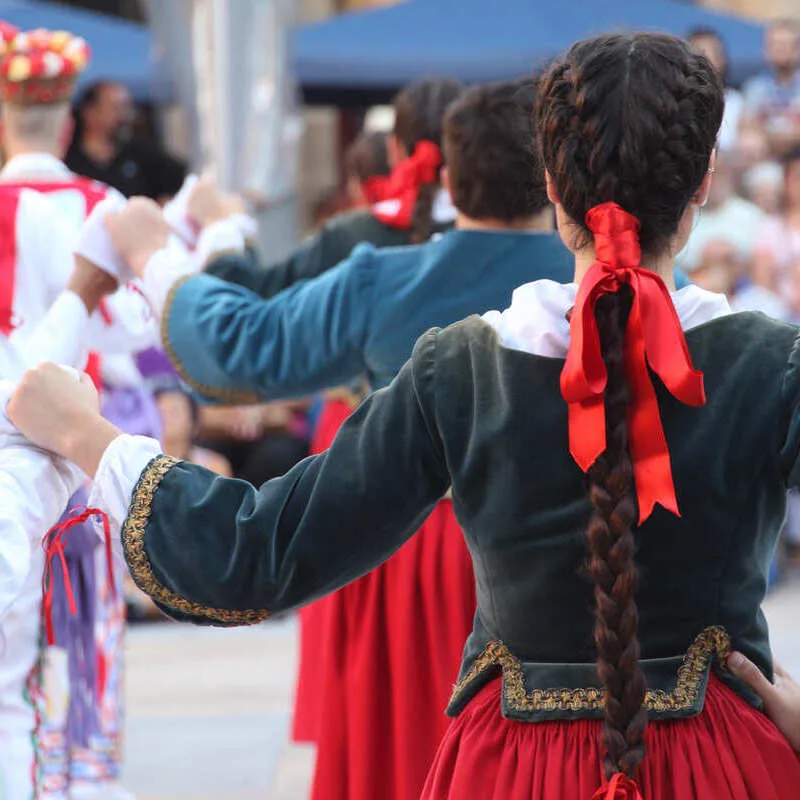
If you come across any text sample of the Basque language (or Euskara) on the web, you will soon realize it bears no resemblance whatsoever with Spanish or French, or in fact any Latin-derived language, the linguistic group that surrounds it.
It is what we call a ‘language island’: Basque is not closely related to any other language in the Indo-European family, and its origins are highly debated. In fact, it may well be the oldest language in Western Europe.
There are more interesting facts about Basque Country and Basque culture, other than merely linguistics: the Basques, both on the Spanish and French sides, have their own folkloric traditions and an ancient culture, which have shaped a sort of nationhood within the countries they’re located.
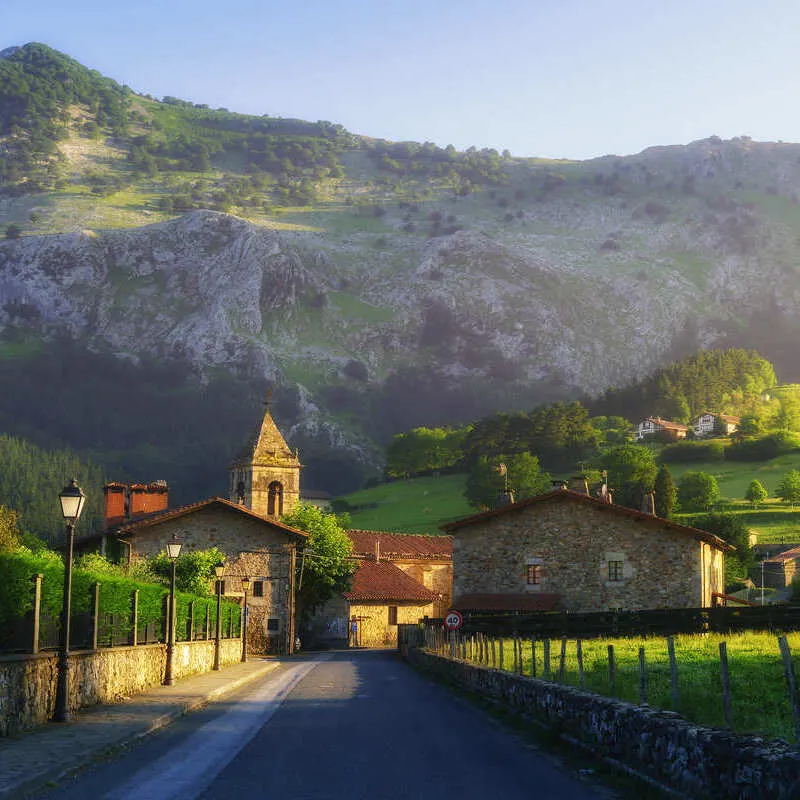
Whether it’s tales of giants called jentillak that once roamed the territory until the coming of the Christ, or olentzero, their version of Santa, and a straw figure commonly found scattered around the countryside, you will be mesmerized by their distinct culture and belief system.
Basque’s Delectable Cuisine
Basque cuisine is also easily distinguished from the rest, though over the centuries, as a result of integration with other Iberian groups, particularly within Spain, it’s been influenced by external agents.
Nevertheless, when strolling the lively streets of Bilbao, the largest city in the Spanish autonomous community of Basque, you will find dishes that are unique to the territory, especially meats grilled over hot coals, a fish stew called marmitako, Basque’s traditional pintxos (their version of tapas), French Basque’s Melu koxkera, a line-caught hake soup made with asparagus and peas, and many more.

It still feels somewhat Spanish (or Iberian), but with a special extra something.
With its rich past, amazing culture, and delectable cuisine, it should come as no surprise a growing number of travelers is picking Basque Country for their vacations.
An Underrated Sunny Hotspot
Not only is it a fascinating destination, Basque is a hugely underrated sunny getaway, straddling the beautiful Bay of Biscay, on Spain and France’s Atlantic Coast, and boasting endless miles of sandy beaches.
Charming Biarritz
Biarritz, a charming, small Basque city on the French side, has been named by Vogue this summer’s ‘buzziest‘ resort town.
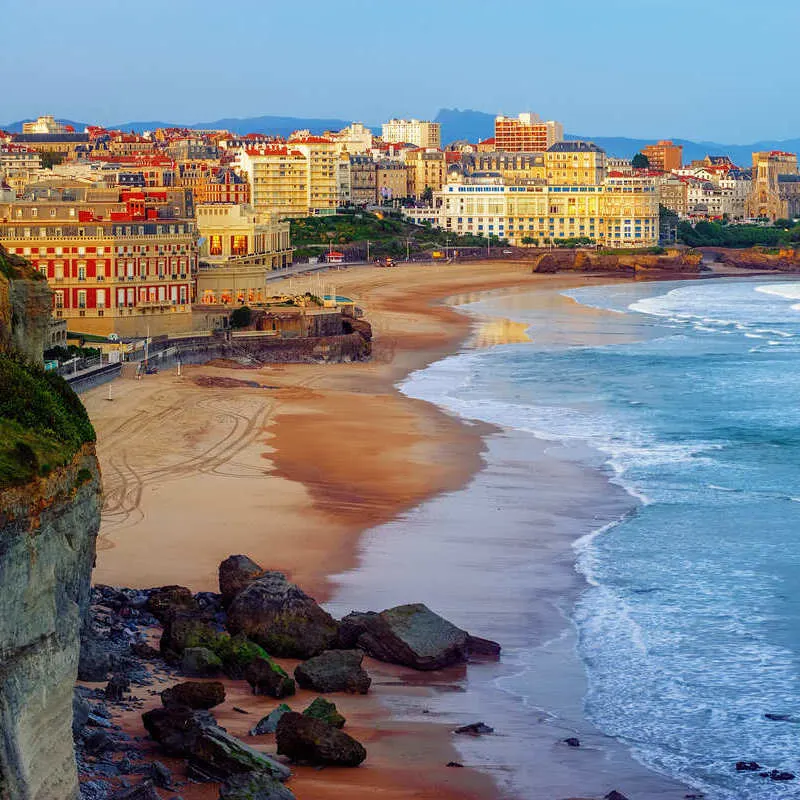
It’s a highly-developed luxury destination with a high concentration of five-star properties and casinos lining the sea promenade. It’s the kind of place you’d go if you’re craving those high-end, exclusive, summery Southern France vibes yet want none of Cote d’Azur’s staggeringly disruptive crowding.
Old Town Biarritz is particularly charming, what with its enviable supply of chic cafes, with terraces that spill onto the narrow streets, and medieval landmarks.
Traditional Donostia
Over on the Spanish side, easily where Basque Country culture can be felt the strongest, the major resort town is San Sebastian (or in native Basque, Donostia).
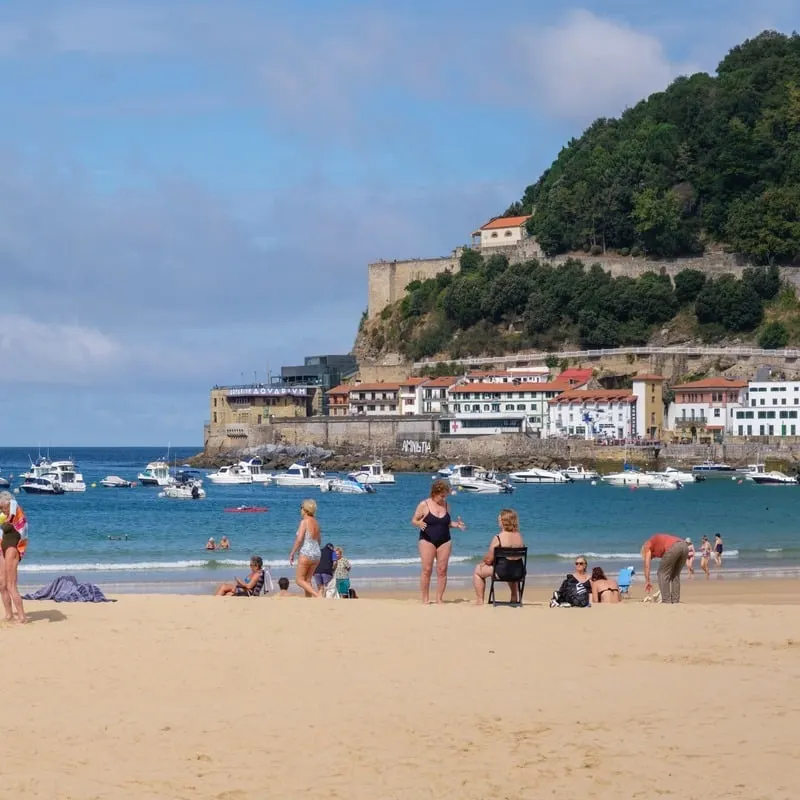
Though the entire Basque coastline is simply spectacular, with towering cliffs and rugged coastal patches interspersed with sandy crescents and traditional fishing villages, it’s San Sebastian/ Donostia that truly steals the limelight as the trendiest bathing spot.
The crescent-shaped Beach of La Concha, lining Donostia’s coastal promenade, is famous for its golden sands and serene, bright-blue waters, which are not as warm as the Mediterranean’s – after all, this is the Atlantic – but still feel refreshing in the Spanish summer, when temperatures can easily soar above 40 degrees.
In the high season, it is well-frequented by locals and visitors alike, who love basking (pun intended) in the sun and going for dips in the azure ocean.
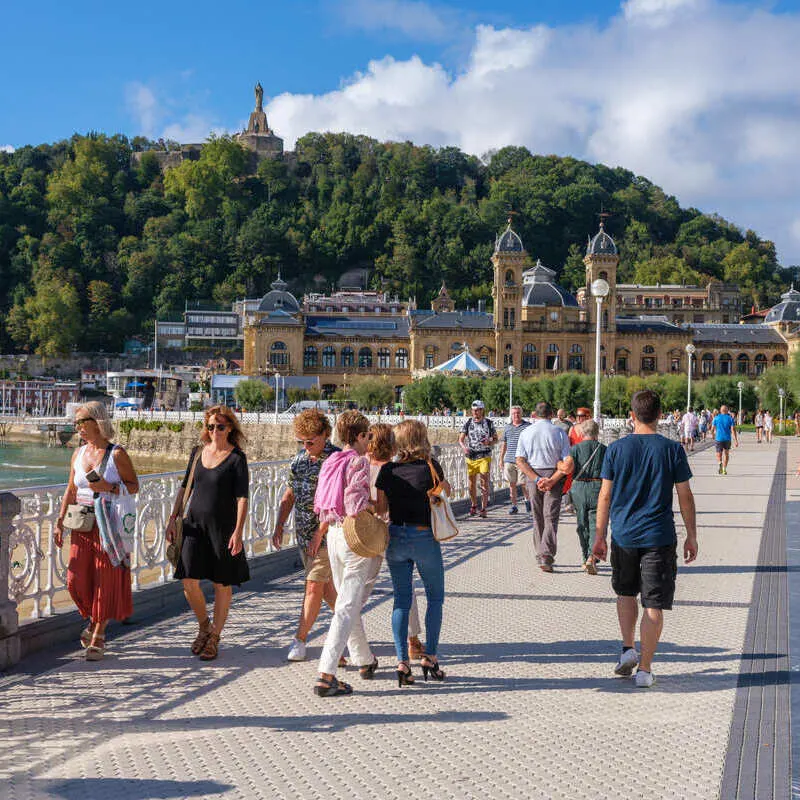
The historic center is yet another major attraction, dotted with stately neoclassical buildings and far older 15th-century structures. The San Sebastian Cathedral, completed in the late 19th century, towers above the Parte Vieja.
Cosmopolitan Bilbao
Basque’s main tourist destination, however, is Bilbao, one of the largest cities in Northern Spain and a metropolis home to over 900,000 inhabitants.
Seeing that it is so cosmopolitan, with a multicultural community, it may be harder to hear Basque being spoken in the streets, as Castillano (Spanish) is de facto a lingua franca, but you will still find it belongs in a different realm altogether than other Spanish cities, what with the road signs in Basque, the quirky traditional eateries, and Basque national flags hanging from civic buildings.

Last year, Bilbao hit its milestone millionth-tourist in a year for the first time, and its popularity as an alternative destination to the over-crowded Barcelona and Madrid, two of Spain’s leading cities, has been growing massively.
With more accommodation options – it had 8,580 beds distributed among 79 properties and last year, this had already increased to 9,945 and 85, respectively – and a sharp increase in foreign tourism, it is set to become one of Spain’s most sought-after city breaks.
Lovely Quaint Towns
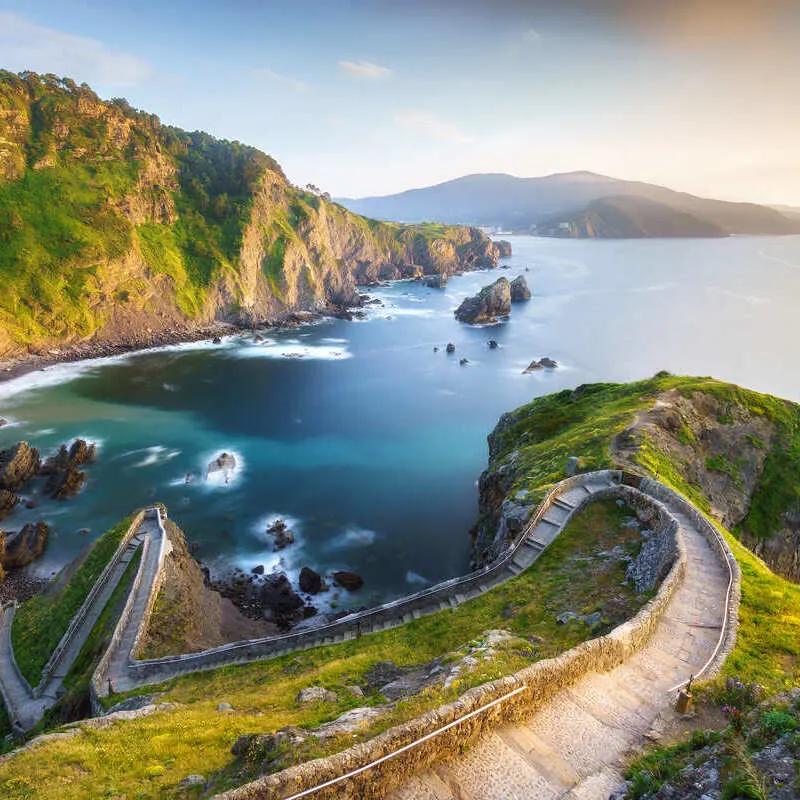
If you’re basing yourself in Bilbao, however, make sure you head out of the city for a taste of the ‘true’ Basque Country, best experienced in smaller towns like Gernika, which served as an inspiration to Picasso’s masterpiece Guernica, and the city of Vitoria-Gasteiz, the historical capital of the Basque Country.
Basque is more commonly spoken in the Basque hinterland, and the cultural identity is generally stronger.
Other than Gernika, Vitoria-Gasteiz, San Sebastian/ Donostia, and the Bay of Biscay’s resort towns, popular day trips include San Juan de Gaztelugatxe, which Game of Thrones fans will instantly recognize as the filming location for Dragonstone, and Hondarribia, a pretty coastal village on the Spanish border with France.
Learn more about other lesser-known regions of Spain here.
Traveler Alert: Don’t Forget Travel Insurance For Your Next Trip!
↓ Join Our Community ↓
The Travel Off Path Community FB group has all the latest reopening news, conversations, and Q&A’s happening daily!

SUBSCRIBE TO OUR LATEST POSTS
Enter your email address to subscribe to Travel Off Path’s latest breaking travel news, straight to your inbox.
This article originally appeared on TravelOffPath.com
